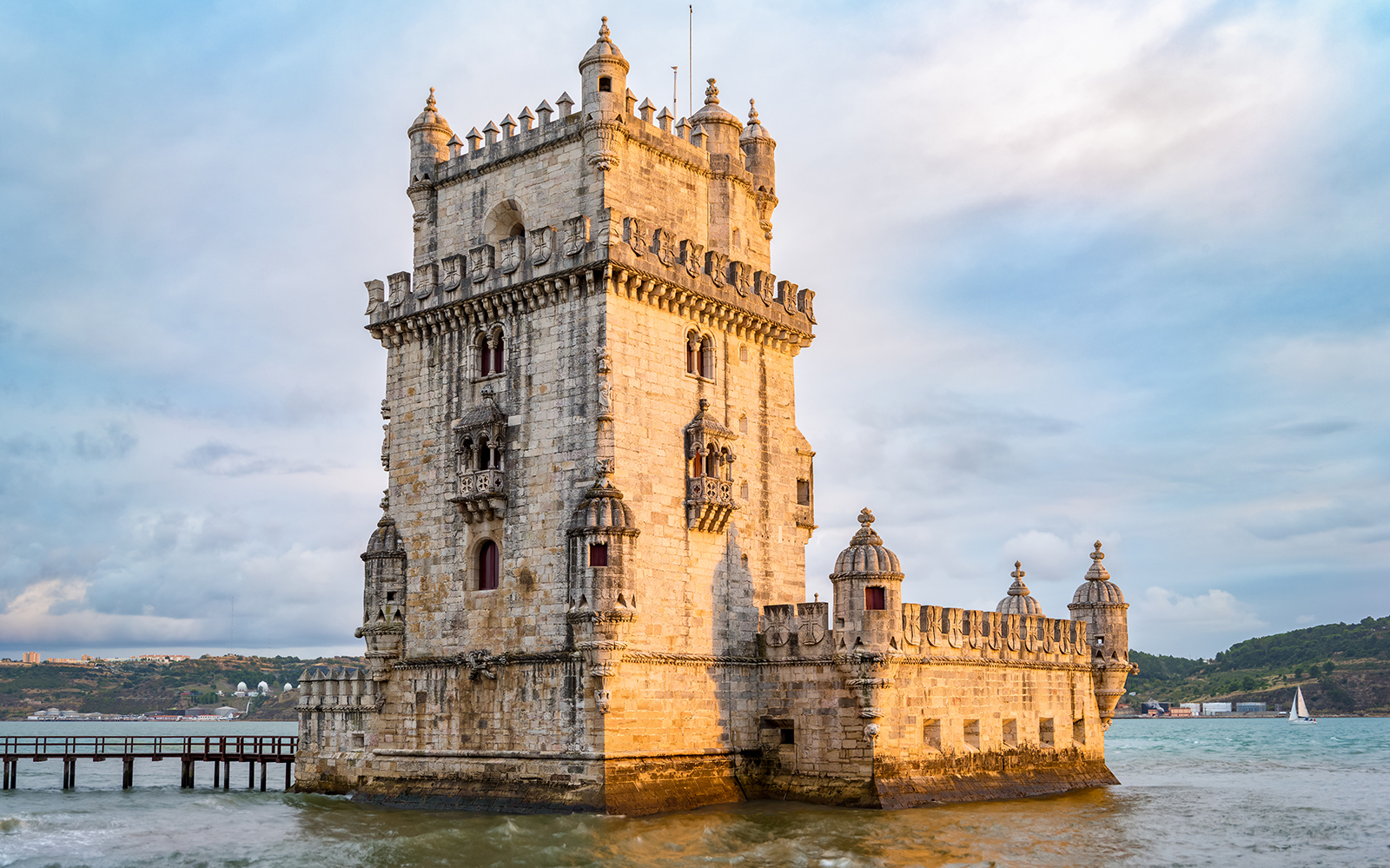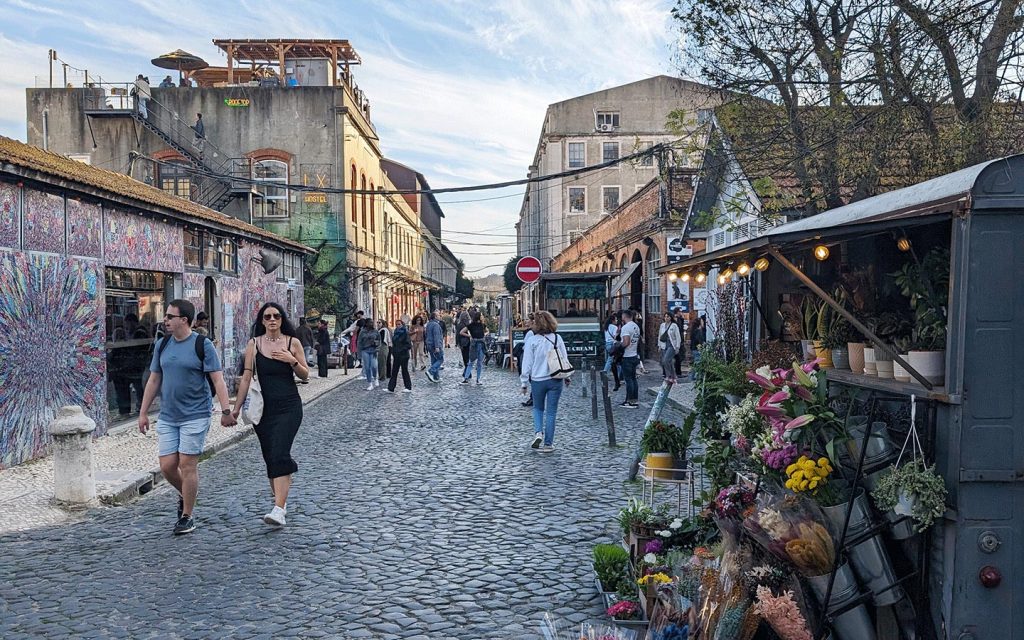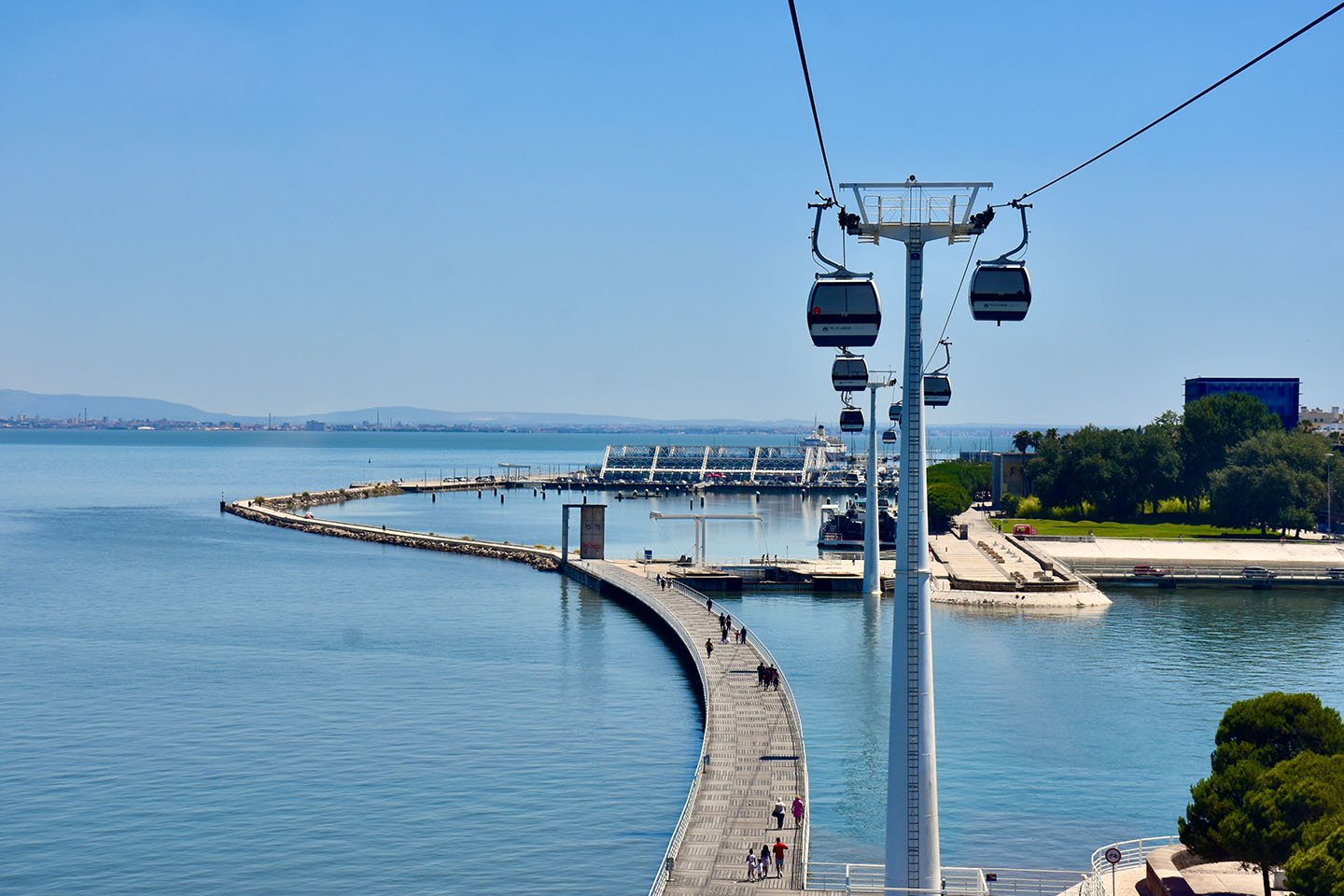
Table of Contents
Lisbon, the vibrant capital of Portugal, is a city where the past and the future harmoniously coexist. Nestled on the banks of the Tagus River, this city is not just a tourist destination but a living museum of history, culture, and innovation. With its unique blend of traditional charm and modern advancements, Lisbon has become a beacon for travelers seeking both historical depth and contemporary excitement. Here, we explore five top destinations in Lisbon that not only attract millions of tourists but also showcase the city’s commitment to innovation and its impact on local life.
A Brief History of Lisbon
Lisbon’s history dates back over 3,000 years, with influences from the Phoenicians, Romans, Moors, and Portuguese explorers. The city’s strategic coastal location made it a key trading hub in ancient times, contributing to its growth and prosperity.
Moorish Influence and the Reconquista
During the 8th century, Lisbon fell under Moorish rule, introducing Islamic architecture, culture, and advanced engineering. The influence of this era can still be seen in the Alfama district’s narrow alleys and tiled courtyards. In 1147, Christian forces led by King Afonso I reconquered the city, marking a new chapter in its history.
The Age of Exploration
The 15th and 16th centuries were Lisbon’s golden age, as Portuguese explorers set sail to discover new worlds. The city became one of Europe’s wealthiest ports, with riches flowing in from Africa, Asia, and the Americas. The iconic Belém Tower and Jerónimos Monastery, both UNESCO World Heritage Sites, stand as monuments to this era of maritime dominance.
The 1755 Earthquake and Rebirth
On November 1, 1755, Lisbon was devastated by one of the deadliest earthquakes in history, followed by a tsunami and fires that destroyed much of the city. The Marquis of Pombal led an ambitious rebuilding effort, introducing innovative urban planning that laid the foundation for modern Lisbon.
Modern Lisbon: A City of Innovation
Today, Lisbon is a thriving European capital, balancing historical preservation with technological advancements and sustainable urban development. Its cultural scene is booming, with a mix of traditional fado music, contemporary art, and innovative gastronomy.
Cultural and Artistic Heritage
Lisbon’s culture is deeply rooted in its history, yet it continues to evolve with new influences and modern creativity.
Fado: The Soul of Lisbon
Fado, a melancholic and deeply expressive music genre, originated in Lisbon in the early 19th century. It tells stories of love, longing, and the struggles of daily life. To experience authentic fado, visit Clube de Fado or A Tasca do Chico in the Alfama and Bairro Alto districts.
Tile Art and Azulejos
One of Lisbon’s most recognizable artistic expressions is azulejo tilework. The National Tile Museum (Museu Nacional do Azulejo) showcases centuries of intricate tile designs that depict Portugal’s history, culture, and everyday life.
Lisbon’s Street Art Scene
Lisbon has emerged as a global hub for street art, with colorful murals transforming ordinary walls into works of art. The city’s LX Factory and Bairro Alto are some of the best places to admire urban creativity, featuring pieces from both local and international artists.
Top Tourist Attractions in Lisbon
Lisbon offers a mix of historical landmarks, breathtaking viewpoints, and lively neighborhoods that every visitor should explore.
1. Belém Tower (Torre de Belém)

1. Belém Tower (Torre de Belém)
Belém Tower, or Torre de Belém, is one of Portugal’s most famous historical monuments, standing proudly on the banks of the Tagus River in Lisbon. Built in the early 16th century, this architectural masterpiece is a symbol of Portugal’s Age of Exploration and continues to be a cultural and historical treasure in modern times. With its rich past, ongoing preservation efforts, and contemporary relevance, Belém Tower remains a must-visit destination for history enthusiasts and travelers alike.
The Origins and Historical Significance of Belém Tower
Belém Tower was constructed between 1514 and 1519 under the reign of King Manuel I. Designed by architect Francisco de Arruda, it was originally intended as a defensive fortress to protect Lisbon’s harbor from potential invasions. The tower exemplifies the Manueline architectural style, characterized by intricate maritime motifs, ornate stone carvings, and Moorish influences.
During the Age of Discovery, Belém Tower served as a departure and arrival point for Portuguese explorers, including Vasco da Gama. Over the centuries, it played various roles, from a customs checkpoint and a lighthouse to a political prison during the Spanish occupation.
Belém Tower in Modern Society
Today, Belém Tower is a UNESCO World Heritage Site and one of Lisbon’s most visited attractions. Efforts to preserve the monument have ensured that its historical integrity remains intact while allowing visitors to explore its significance in Portuguese history.
Recent innovations include enhanced visitor experiences through digital tours, interactive exhibits, and improved accessibility. The surrounding Belém district also complements the tower’s historical charm with cultural attractions such as the Jerónimos Monastery and the Monument to the Discoveries.
The Cultural and Economic Impact of Belém Tower
- Tourism & Economy: As a major landmark, Belém Tower attracts thousands of visitors annually, boosting Lisbon’s tourism industry and supporting local businesses.
- Symbol of Portugal’s Maritime Heritage: The tower remains a national icon, reminding citizens and visitors of Portugal’s pioneering role in global exploration.
- Preservation & Education: Conservation projects and educational programs help keep Portugal’s history alive for future generations.
Why Visit Belém Tower?
- Stunning Architecture: Admire the Manueline-style details and breathtaking views of the Tagus River.
- Rich History: Walk through the tower’s chambers and terraces to learn about its role in Portugal’s maritime past.
- Perfect Location: Explore nearby cultural attractions, including the famous Pastéis de Belém pastry shop.
- Photogenic Scenery: Capture incredible photos of one of Lisbon’s most picturesque landmarks.
Historical Significance and Modern Appeal of Belém Tower:
- Brief Overview: The Belém Tower, or “Torre de Belém,” is an iconic symbol of Portugal’s Age of Discovery. Constructed in the early 16th century, this fortress-turned-tower once served as a ceremonial gateway to Lisbon and was a beacon for explorers setting out to the New World.
- What to See: The tower itself is a masterpiece of Manueline architecture, adorned with intricate stone carvings that depict maritime themes. Visitors can climb to the top for panoramic views of the Tagus River and the city, experiencing both historical significance and breathtaking modern vistas.
- Innovative Integration: Today, Belém Tower stands as a cultural landmark with advanced visitor management systems. Interactive tours via mobile apps provide augmented reality experiences, bringing the historical narratives to life for tourists. This innovation not only enriches the visitor experience but also helps in preserving the structure by managing crowd flows.
- Impact on Local Life: The area around Belém Tower has evolved into a cultural hub. The proximity to the Jerónimos Monastery and the Pastéis de Belém bakery means that local residents benefit from tourism through job opportunities and economic growth. Moreover, the tower’s surroundings have become a space for community events, from music festivals to art exhibitions, fostering a blend of local and tourist interaction.
2. LX Factory

2. LX Factory
LX Factory, one of Lisbon’s most dynamic and creative spaces, has transformed from an industrial complex into a thriving cultural and artistic hub. Nestled in the Alcântara district, under the shadow of the iconic 25 de Abril Bridge, LX Factory blends history with innovation, attracting artists, entrepreneurs, and visitors from around the world. Its journey from a 19th-century manufacturing site to a vibrant center for arts, gastronomy, and entrepreneurship is a testament to Lisbon’s evolving urban landscape.
The Industrial Origins of LX Factory
LX Factory was originally established in 1846 as the site of Companhia de Fiação e Tecidos Lisbonense, one of Portugal’s largest textile and manufacturing plants. During the industrial boom, the complex expanded, housing various factories and workshops that played a crucial role in Lisbon’s economic growth. However, as industries modernized and relocated, the site fell into decline by the late 20th century.
The Revival and Transformation
In 2008, LX Factory was reborn as a creative and cultural district, repurposing its historic buildings into a space that fosters innovation and artistic expression. Today, the area is home to independent boutiques, coworking spaces, design studios, street art murals, concept restaurants, and live performance venues. This transformation reflects a broader global trend of revitalizing old industrial spaces into cultural hubs that celebrate heritage while embracing modernity.
LX Factory’s Impact on Modern Society
Cultural Influence
LX Factory has become a melting pot of creativity, hosting art exhibitions, live music events, and literary fairs. The famous bookstore Ler Devagar, housed in a former printing press, is one of the most photographed bookshops in the world.
Economic and Entrepreneurial Growth
The district serves as a launchpad for startups, designers, and restaurateurs, creating new job opportunities and boosting Lisbon’s reputation as a hub for innovation and entrepreneurship.
Tourism and Community Engagement
LX Factory has become a must-visit destination for travelers seeking an authentic cultural experience beyond Lisbon’s traditional landmarks. Local markets, such as the weekly LX Market, support small businesses and foster a sense of community.
Why Visit LX Factory?
- Unique Shopping & Dining: Discover independent fashion brands, handmade crafts, and gourmet experiences in a one-of-a-kind setting.
- Street Art & Architecture: Explore the striking murals and repurposed industrial buildings that give LX Factory its distinct character.
- Vibrant Events & Nightlife: From open-air concerts to pop-up exhibitions, there’s always something happening at LX Factory.
- Inspiring Atmosphere: Whether you’re a creative professional, a digital nomad, or simply an urban explorer, LX Factory offers an inspiring environment to work, socialize, or relax.
From Industrial to Innovative:
- Brief Overview: Once an industrial complex, LX Factory in the Alcântara district has been transformed into a creative and cultural hub, epitomizing Lisbon’s innovative spirit.
- What to See: This area is now a vibrant mix of art galleries, bookstores, cafes, and startups, showcasing the city’s commitment to arts, culture, and technology.
- Innovative Integration: LX Factory is home to numerous startups, co-working spaces, and tech incubators, making it a focal point for Lisbon’s burgeoning tech scene. Events like “PechaKucha Nights” and “Creative Mornings” are hosted here, providing platforms for sharing ideas and fostering innovation.
- Impact on Local Life: The transformation of LX Factory has significantly impacted the local community by revitalizing what was once an industrial wasteland into a place that supports local artists, entrepreneurs, and businesses. It has become a place where locals and visitors mingle, offering a snapshot of Lisbon’s dynamic cultural and economic landscape.
3. Park of Nations (Parque das Nações)

3. Park of Nations
Park of Nations, or Parque das Nações, is one of Lisbon’s most innovative urban developments. Originally designed for the 1998 World Expo (Expo ’98), this waterfront district has transformed from an industrial zone into a vibrant, contemporary hub for culture, business, and leisure. With its mix of futuristic architecture, green spaces, and cultural attractions, Park of Nations reflects Lisbon’s ability to blend history with modernity while enhancing the quality of urban life.
The Evolution of Park of Nations
Before the 1990s, the area that now hosts Park of Nations was an industrial and maritime wasteland. To revitalize this underutilized space, the Portuguese government selected it as the site for Expo ’98, a global event dedicated to the theme of “The Oceans: A Heritage for the Future.” The event showcased Portugal’s maritime legacy while introducing cutting-edge urban design and sustainability concepts.
Following the Expo, the government and private investors transformed the site into a permanent urban district, maintaining much of its infrastructure while integrating new residential, commercial, and recreational spaces. Today, Park of Nations is one of Lisbon’s most desirable areas, known for its modern skyline, cultural venues, and sustainable urban planning.
Park of Nations in Modern Society
Park of Nations is home to some of Lisbon’s most popular attractions, including:
- Oceanário de Lisboa – One of Europe’s largest and most impressive aquariums.
- Altice Arena – A major venue for concerts, sports, and international events.
- Pavilhão do Conhecimento – A science and technology museum that engages visitors of all ages.
- Telecabine Lisboa – A scenic cable car ride offering panoramic views of the Tagus River and the Vasco da Gama Bridge.
An Economic and Business Center
The district has become a hub for business, attracting international companies, startups, and tech firms. With modern office spaces and excellent infrastructure, Park of Nations plays a crucial role in Lisbon’s economic growth.
A Model for Sustainable Urban Living
Park of Nations was designed with sustainability in mind, featuring eco-friendly architecture, extensive green spaces, and efficient public transportation. The district’s walkable streets, bicycle paths, and access to the metro make it one of the most livable areas in Lisbon.
Why Visit Park of Nations?
- Modern Architecture & Scenic Views: Experience a stunning blend of futuristic buildings and riverside landscapes.
- Cultural & Family-Friendly Attractions: Explore museums, aquariums, and entertainment venues that cater to all ages.
- Vibrant Dining & Shopping Scene: Enjoy diverse cuisine, stylish cafés, and shopping at the Vasco da Gama Shopping Center.
- Outdoor Activities: Walk along the riverside promenade, take a cable car ride, or relax in one of the many parks.
A Testament to Modern Lisbon:
- Brief Overview: Developed for the 1998 Lisbon World Exposition, the Park of Nations is a modern district that showcases Lisbon’s leap into the 21st century.
- What to See: The area features futuristic architecture like the Vasco da Gama Tower, the longest bridge in Europe, and the Oceanário de Lisboa, one of the largest aquariums in the world. The park also offers extensive green spaces, perfect for leisure activities.
- Innovative Integration: The Park of Nations is a model of urban planning with sustainability at its core. It includes smart city technologies like energy-efficient buildings, advanced public transport systems, and interactive public art installations that engage visitors with technology.
- Impact on Local Life: This district has transformed the eastern part of Lisbon, providing high-quality living spaces and employment opportunities. It’s also a popular spot for both locals and tourists for its festivals, sports events, and cultural shows, integrating community life with tourism in a modern setting.
4. Chiado & Bairro Alto
4. Chiado & Bairro Alto
Chiado and Bairro Alto are two of Lisbon’s most iconic and historic neighborhoods, each offering a distinct yet complementary experience of the city’s vibrant culture. While Chiado is known for its elegant streets, literary heritage, and artistic atmosphere, Bairro Alto is celebrated for its bohemian charm and legendary nightlife. Together, they represent the dynamic evolution of Lisbon’s social and cultural identity, blending history with modern innovation.
The Evolution of Chiado: Lisbon’s Intellectual and Artistic Hub
Chiado’s origins date back to the Middle Ages, but it became a center for intellectuals and artists during the 18th and 19th centuries. The area was home to some of Portugal’s most renowned poets and writers, including Fernando Pessoa, whose presence is immortalized at Café A Brasileira.
However, Chiado suffered a devastating fire in 1988, destroying many historic buildings. Thanks to a meticulous restoration led by architect Álvaro Siza Vieira, the neighborhood was revitalized, preserving its historic charm while incorporating modern elements. Today, Chiado is a bustling district filled with theaters, bookstores, luxury boutiques, and cultural landmarks such as the National Museum of Contemporary Art.
Bairro Alto: From Tradition to Modernity
Bairro Alto was established in the 16th century as a residential area, but by the 20th century, it had transformed into Lisbon’s nightlife epicenter. Known for its maze of cobblestone streets lined with bars, fado houses, and restaurants, Bairro Alto has long been a meeting point for locals, tourists, and artists.
In recent years, the neighborhood has embraced innovation while preserving its traditions. New concept bars, art galleries, and boutique hotels have emerged, enhancing Bairro Alto’s appeal while maintaining its historic soul.
Chiado & Bairro Alto in Modern Society
Cultural Influence
- Chiado: A haven for book lovers, theatergoers, and art enthusiasts.
- Bairro Alto: A nightlife hub where traditional fado music coexists with contemporary entertainment.
Economic Impact
The revitalization of Chiado and Bairro Alto has contributed to Lisbon’s tourism boom. Local businesses, from independent bookstores to rooftop bars, thrive due to the influx of visitors seeking an authentic Lisbon experience.
Urban Innovation and Sustainability
Lisbon has invested in sustainable tourism initiatives in these districts, including pedestrian-friendly zones, electric tuk-tuks, and conservation projects to protect historic architecture.
Why Visit Chiado & Bairro Alto?
- Literary & Artistic Heritage: Explore historic cafés, theaters, and museums.
- Scenic Views: Enjoy breathtaking cityscapes from viewpoints like Miradouro de São Pedro de Alcântara.
- Vibrant Nightlife: Experience the unique blend of fado music, rooftop bars, and lively streets.
- Shopping & Dining: Discover everything from luxury brands to local artisan shops and traditional Portuguese cuisine.
Where Tradition Meets Innovation:
- Brief Overview: These neighboring districts are the heart of Lisbon’s cultural scene, known for their historic cafes, Fado music, and vibrant nightlife.
- What to See: In Chiado, visit the Bertrand bookstore, the oldest operating bookstore in the world, and in Bairro Alto, explore the maze of narrow streets lined with bars and eateries.
- Innovative Integration: While deeply traditional, these areas are not immune to modern influences. Digital art projections on historical buildings, apps for Fado music tours, and the integration of VR in cultural heritage tours offer new ways to experience these old neighborhoods.
- Impact on Local Life: The economic vibrancy of Chiado and Bairro Alto supports a diverse local community, from artists to restaurateurs. The areas’ nightlife and cultural offerings have made them not just tourist spots but also centers of cultural exchange and innovation in entertainment.
5. Museu Nacional do Azulejo

5. Museu Nacional do Azulejo
Lisbon is a city adorned with vibrant tiles, and nowhere is this tradition more celebrated than at the Museu Nacional do Azulejo (National Tile Museum). Housed in a former 16th-century convent, this museum tells the story of Portugal’s centuries-old azulejo (ceramic tile) art, from its Moorish influences to contemporary interpretations. The museum is not just a cultural treasure but also a testament to how Portugal preserves and innovates within its artistic heritage.
The Origins of Museu Nacional do Azulejo
The museum is located in the Convent of Madre de Deus, founded in 1509 by Queen Leonor. This historic convent, with its stunning baroque chapel and cloisters, became the perfect home for Portugal’s most extensive collection of azulejos. In 1965, the museum was officially established to document and celebrate the evolution of tile-making in Portugal.
The Museum’s Significance in Modern Society
Preserving Cultural Identity
Azulejos are more than decorative elements; they tell stories of Portugal’s history, mythology, and daily life. The museum’s vast collection includes tiles from the 16th century to present-day, preserving the country’s artistic evolution.
Innovation & Contemporary Influence
While the museum showcases traditional tilework, it also embraces modern interpretations, inspiring contemporary artists and architects to integrate azulejos into new designs. Today, Lisbon continues to innovate by restoring historic tiles and incorporating them into public art projects and modern buildings.
Tourism & Economic Impact
As one of Lisbon’s most visited cultural institutions, the museum plays a crucial role in promoting heritage tourism. The growing appreciation for azulejos has also spurred interest in artisanal tile-making workshops, contributing to local craftsmanship and business.
Why Visit Museu Nacional do Azulejo?
- Unique Collection: See Portugal’s most stunning tile panels, including the Panorama of Lisbon, a massive azulejo panel depicting the city before the 1755 earthquake.
- Architectural Beauty: Explore the beautifully preserved convent, its gilded altars, and azulejo-covered walls.
- Interactive Experience: Learn about the tile-making process and even take part in workshops.
- Cultural & Artistic Inspiration: Discover how azulejos continue to influence Lisbon’s urban landscape and design trends.
Celebrating Portugal’s Artistic Heritage:
- Brief Overview: This museum is dedicated to the art of azulejo, the traditional Portuguese tiles that adorn many of Lisbon’s buildings.
- What to See: The museum houses an extensive collection of tiles from the 15th century to the present day, offering a historical journey through this unique art form.
- Innovative Integration: The Museu Nacional do Azulejo has embraced technology with interactive exhibits where visitors can design their own tiles, learn about restoration techniques, or explore the history through digital storytelling.
- Impact on Local Life: By preserving and promoting this aspect of Portuguese culture, the museum ensures that local artisans continue to have a platform. It also educates both locals and tourists about the cultural significance of azulejo, contributing to a deeper appreciation of Lisbon’s architectural beauty.
Conclusion
Museu Nacional do Azulejo is more than a museum it’s a celebration of Portugal’s artistic soul. By preserving and innovating its tile-making tradition, Lisbon continues to honor its heritage while embracing contemporary creativity. A visit to this museum offers a deeper appreciation of the artistry behind the tiles that define Lisbon’s unique visual identity.
Conclusion
Lisbon is a city of contrasts ancient yet modern, traditional yet innovative. Whether you’re exploring its rich history, immersing yourself in its cultural tapestry, or indulging in its culinary delights, Lisbon offers something for everyone. As the city continues to evolve, it remains a beacon of Portugal’s resilience, creativity, and warmth. A visit to Lisbon is not just a journey through time but an experience that stays with you forever.









